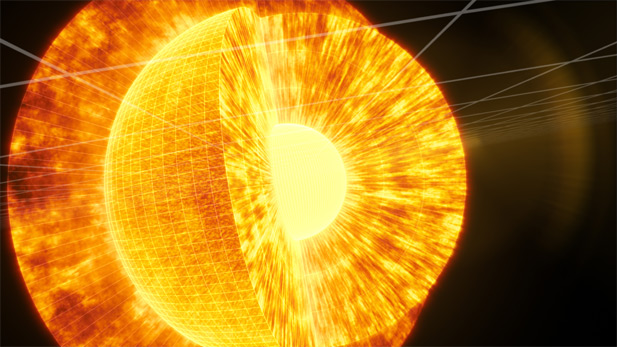It contains 99.9 percent of all the matter in our solar system and sheds hot plasma at nearly a million miles an hour. The temperature at its core is a staggering 27 million degrees Fahrenheit. It convulses, it blazes, it sings. You know it as the sun. Scientists know it as one of the most amazing physics laboratories in the universe. Now, with the help of new spacecraft and Earth-based telescopes, scientists are seeing the sun as they never have before and even re-creating in labs what happens at the very center of the sun.
 The Sun, our nearest star, is made of three main layers, from the center outwards is the core, the radiative zone, and finally the convective zone above which we see it’s brilliant surface.
The Sun, our nearest star, is made of three main layers, from the center outwards is the core, the radiative zone, and finally the convective zone above which we see it’s brilliant surface.Their work will help us understand aspects of the sun that have puzzled scientists for decades. But more critically, it may help us predict and track solar storms that have the power to zap our power grid, shut down telecommunications and ground global air travel for days, weeks, even longer. Such storms have occurred before — but never in the modern era of satellite communication. "Secrets of the Sun" reveals a bright new dawn in our understanding of our nearest star — one that might help keep our planet from going dark.
Watch Secrets of the Sun Preview on PBS. See more from NOVA.
NOVA: Secrets of the Sun, Wednesday at 9 p.m. on PBS-HD.


By submitting your comments, you hereby give AZPM the right to post your comments and potentially use them in any other form of media operated by this institution.